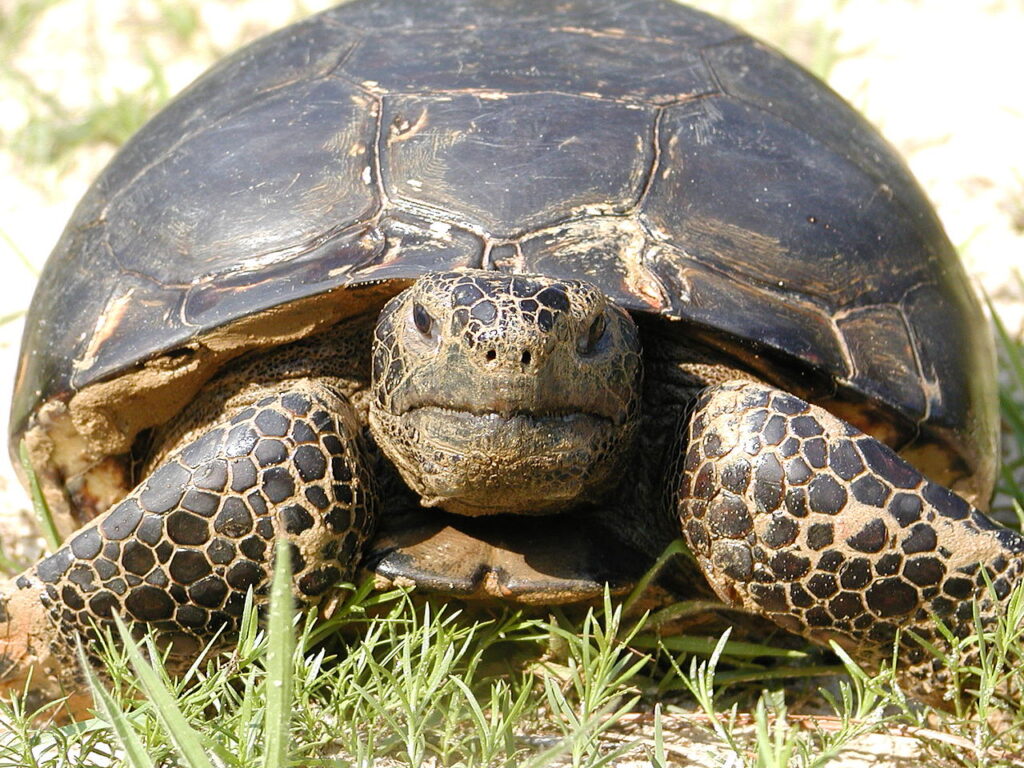So many environmental issues lead to conflict that it’s easy to think that such conflict is inevitable. But it needn’t be that way. Conservationists, industry, and property owners can cooperate on environmental issues, often obtaining better results that can be achieved through regulation.
Take endangered species. In the United States, the federal Endangered Species Act is the primary law regulating such species. Unfortunately, that law encourages conflict rather than cooperation, often at the expense of conservation.
But that has recently been changing, as conservation groups have increasingly worked with states, industry, and property owners to voluntarily protect species without the need of a federal listing. That innovation, used to great affect by the Obama administration, has improved the plight of several species. And it has shown a better way to pursue conservation.
The latest beneficiary of this voluntary conservation is the gopher tortoise. Through the Gopher Tortoise Initiative, the federal government, state of Georgia, and private groups are raising $150 million to recover this species. The central component of the plan is to work cooperatively with landowners to encourage habitat restoration and tortoise reintroduction.
From the NPR story on the initiative:
“I recently heard that our new Secretary [of the Interior] Zinke is all about conservation without conflict, and this is clearly an example of that,” says Don Imm, the U.S. Fish and Wildlife field supervisor in Georgia. Imm says if the science indicates that gopher tortoises should be federally protected, then they will be. But, he says, “if you can do something to avoid the conflict, or even the need to list, that’s a much better result.”
It’s better for businesses, too, says Doug Miell, a consultant with the Georgia Chamber of Commerce. “There’s always a perception that business and industry and conservation groups are at loggerheads, that we don’t agree on anything,” Miell says. “This is a good example of where we can come together to demonstrate that, hey, we might be looking at it from different sides, but the outcome is the same.”
The gopher tortoise demonstrates one of the principal benefits of voluntary conservation over regulation. Regulation is focused on stopping human activity. But many species, including the gopher tortoise, require active effort to recover. The gopher tortoise’s habitat slowly declined due to wildfire suppression. Historically, regular wildfires maintained the longleaf pine the tortoise needs. Without those wildfires, restoring and maintaining habitat requires active human management.
To encourage those positive conservation efforts, the Gopher Tortoise Initiative is creating a market for tortoise conservation, by raising funds to purchase habitat and conservation easements to encourage private landowners to follow good conservation practices. As the Initiative begins to spend that $150 million dollars, land that is currently habitat or can be restored to habitat will become more valuable, signaling that it should be preserved rather than developed.
A third of the money funding this conservation is being provided by private conservation and business groups, which will have a role in deciding where it can be most useful. Thus, the money is more likely to be spent wisely, rather than being doled out through politics.
That’s something that all should celebrate. The gopher tortoise is joining a growing list of species that are being saved by markets and free people committed to finding win-win solutions.




